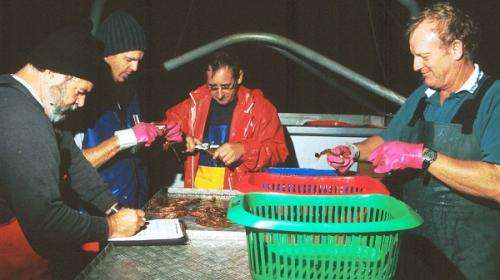Trawling restrictions crucial to preserve biodiversity

A Western Australian study has found that restricting trawling to 20-40 per cent of fishing areas in Shark Bay can mitigate the long-term impacts of commercial trawling in the region.
The study also calls for the continued use of permanent and seasonal closures within Shark Bay as well as long-term monitoring of fish abundance and species assemblage (make up).
Published in the Marine and Freshwater Research journal the study, involving the WA Fisheries Department and the WA Museum, measured the composition of trawling by-catch in the Shark Bay region.
It also examined the impact of trawling on soft bottom habitats.
WA Fisheries and Marine Research Laboratories principal research scientist Dr Mervi Kangas says keeping the impacts of commercial trawling at an acceptable level is crucial.
Compared to most other fishing methods trawling is recognised as non-selective.
The authors write that collecting data on trawl by-catch was the central aim of the study, to assist in achieving biologically sustainable fisheries in the region.
Dr Kangas says the extensive areas closed to trawling in the region (60-80 per cent) provide protection for species and that maintaining these untrawled areas is very important for biodiversity.
In relation to fish abundance, results showed that trawling had a significant impact, as areas of low-level trawling had significantly higher catch rates than areas with more intensive trawling.
The researchers used depletion experiments to determine the catchability (vulnerability) of by-catch species.
"The depletion experiments clearly indicated that some species are much more vulnerable to trawling, particularly sessile ones or species with limited mobility," the authors write.
Dr Kangas says the impacts of trawling are complex and that the way it affects one marine species is very different to its impact on another species.
The researchers selected 26 sites and took samples during 10-minute trawls over four seasons.
The catch was examined and recorded to determine the abundance and variability of fauna.
The sites chosen included scallop and prawn trawling grounds with varied levels of trawl intensity, as well as areas permanently closed to trawling.
The researchers recorded 241 fish and 360 invertebrate species in total in the Shark Bay area.
Dr Kangas says it is impossible to compare fish abundance to before commercial trawling commenced in the 1960s, as there is no pre-fishing data.
The authors argue that future monitoring is needed particularly as a consequence of fishing, climate change and recent extreme heatwave events.
More information: Kangas, Mervi, and Morrison, Sue (2013). "Trawl impacts and biodiversity management in Shark Bay, Western Australia." Marine and Freshwater Research 64, 1135–1155. dx.doi.org/10.1071/MF12292
Provided by Science Network WA



















